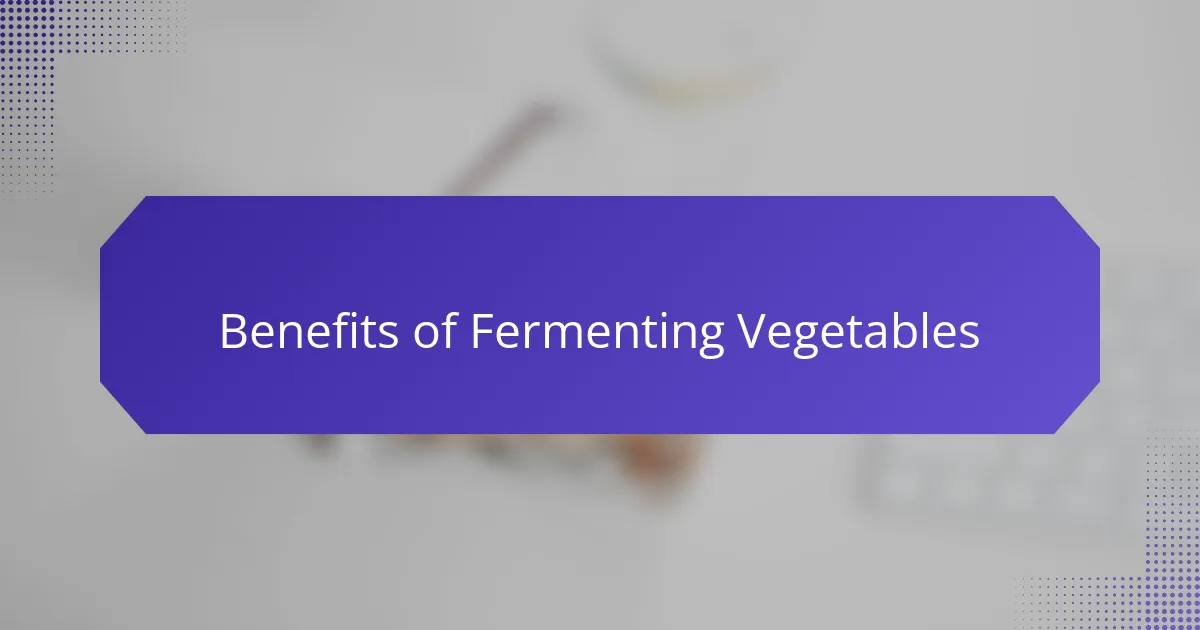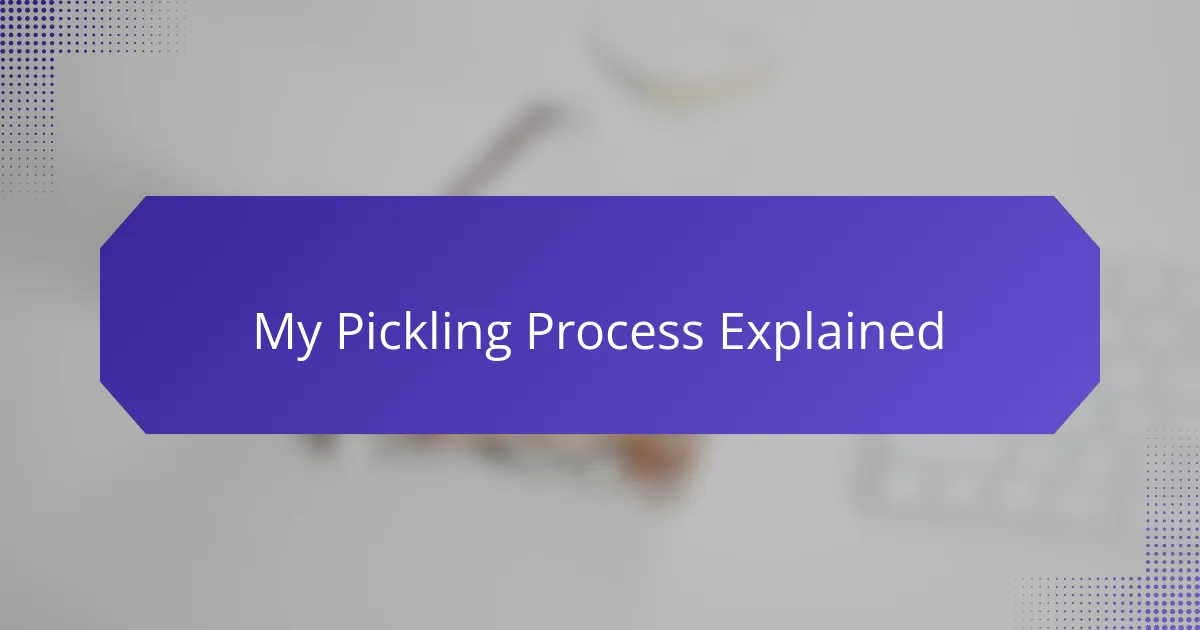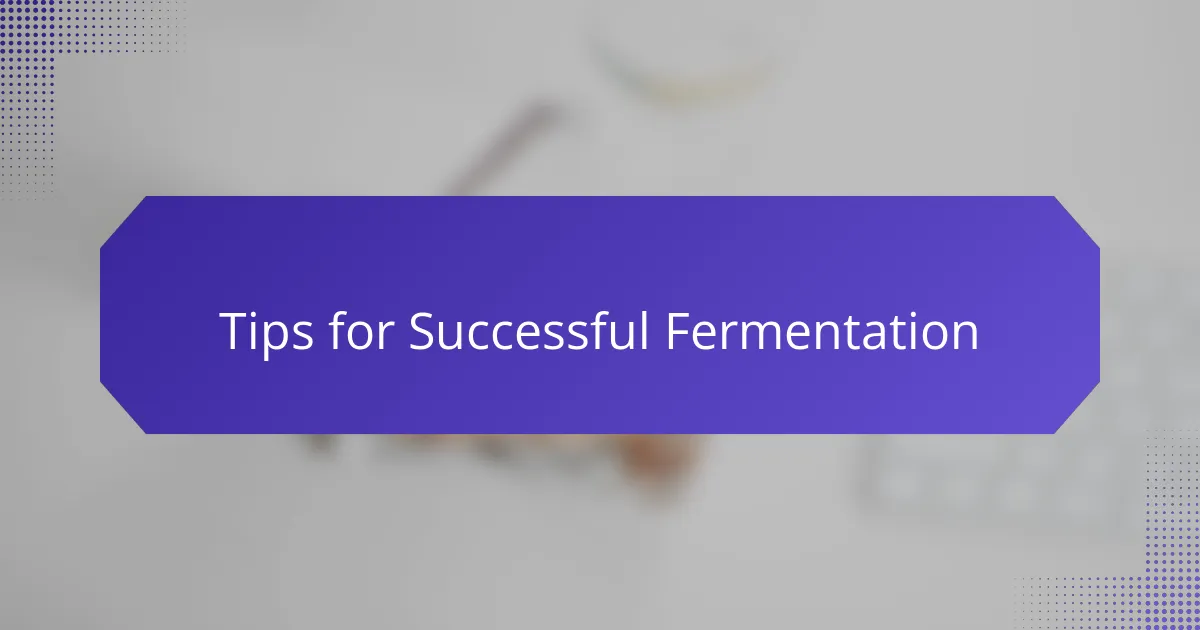Key takeaways
- Fermentation relies on beneficial bacteria, and the process can vary from 1 to 4 weeks, enhancing flavor and nutrition.
- Using fresh pickling cucumbers and quality salt is essential for achieving the desired texture and clarity in brine.
- Ball jars are ideal for fermentation due to their airtight seal, allowing visibility of the process and maintaining crispness.
- Successful fermentation requires patience, monitoring temperature, and experimenting with spices for unique flavors.

Understanding Fermenting Basics
Fermenting pickles has been a delightful journey for me, particularly when I discovered how simple the process can be. The key is understanding that fermentation relies on beneficial bacteria to create that tangy flavor we all love. When I first started, I was surprised to learn just how forgiving the process is—sometimes, the best pickles have a little extra time to soak up those flavors.
To help anyone starting out, here are some essential basics of fermenting pickles:
- Choose fresh cucumbers, preferably pickling varieties, for best texture.
- Use a saltwater brine—around 2-3% salt concentration is optimal for fermentation.
- Keep everything submerged to prevent mold; I use a weight or a small jar to keep the cucumbers down.
- Be patient! Fermentation typically takes 1 to 4 weeks, depending on the ambient temperature and desired tanginess.
- Store your jars in a cool, dark place but check them regularly—this is where the excitement happens!

Benefits of Fermenting Vegetables
One of the most rewarding aspects of fermenting vegetables is how it enhances both flavor and nutrition. When I first tried fermenting pickles in Ball jars, I was amazed at the rich, tangy taste that developed over time. Additionally, fermentation boosts the probiotic content, which supports gut health—a benefit I truly appreciate as someone who values digestive wellness.
Another benefit is the ability to preserve the harvest. Each batch of pickles I make in those trusty jars reminds me of summer’s bounty, allowing me to enjoy fresh flavors well into the colder months. It’s incredibly satisfying to taste the depth of flavor that simple vegetables can achieve through fermentation, and I find myself eager to share these homemade delights with family and friends.
Incorporating fermented vegetables into my meals has not only been a culinary adventure but also a way to connect with traditions passed down through generations. It’s a beautiful blend of creativity and nutrition that I encourage everyone to explore.
| Benefit | Description |
|---|---|
| Enhanced Flavor | Fermentation develops complex, tangy flavors that elevate dishes. |
| Nutritional Boost | Increases probiotic content, supporting digestive health. |
| Preservation | Keeps vegetables fresh and flavorful for months, reducing waste. |

Choosing the Right Ingredients
When it comes to fermenting pickles, choosing the right ingredients can make all the difference. I’ve discovered that fresh cucumbers are essential for a crunchy texture. I remember the first time I used pickling cucumbers—I was amazed at how firm and flavorful they turned out compared to regular ones.
Additionally, using quality salt is crucial. I learned the hard way that table salt can lead to cloudy brine, so I always opt for kosher or sea salt. It’s all about creating a clean fermentation environment to let those flavors shine.
Here’s a comparison of some common options:
| Ingredient | Notes |
|---|---|
| Pickling Cucumbers | Firm texture, ideal for crunch |
| Regular Cucumbers | Softer texture, can become mushy |
| Kosher Salt | Great for fermentation, no additives |
| Table Salt | Contains anti-caking agents, can cloud brine |
| Sea Salt | Natural and unrefined, good choice |

Overview of Ball Jars
When I first started my journey with fermenting pickles, I discovered the versatility of Ball jars. These glass jars have been a staple in home canning for generations, and for good reason. Their airtight seal and durable design make them perfect for preserving the crispness of cucumbers as they transform into tangy pickles.
One of the things I love about Ball jars is their clear glass. It allows me to watch the vibrant colors and bubbles dance during the fermentation process. It’s like a little science experiment right in my kitchen! Plus, they come in various sizes, whether you’re making a batch for yourself or preparing gifts for friends.
Here’s a quick comparison of different types of Ball jars that I found helpful during my pickle-making adventures:
| JAR TYPE | CAPACITY | USE CASE |
|---|---|---|
| Ball Regular Mouth Quart Jar | 32 oz | Great for large batches of pickles |
| Ball Wide Mouth Quart Jar | 32 oz | Easier to fill with whole cucumbers |
| Ball Regular Mouth Pint Jar | 16 oz | Perfect for small batches or gifts |
| Ball Wide Mouth Pint Jar | 16 oz | Ideal for fermenting and storing dips |
With each jar type, I’ve learned something new about the fermentation process, and the right jar can make all the difference in achieving those delicious, crunchy pickles.

My Pickling Process Explained
When I first embarked on my pickle-making journey, I chose to use Ball jars because of their reputation for preserving food effectively. The process begins with selecting the right cucumbers; I prefer the smaller, crunchy varieties. I fill the jars with my chosen spices—dill, garlic, and a touch of red pepper flakes—before pouring a brine of vinegar, water, and salt over them, then sealing the jars tightly.
As I waited for the flavors to meld, I found myself checking on them daily, a mix of excitement and patience growing inside me. The vibrant green of the cucumbers transforming into that wonderful pickle hue was a sight to behold! Each time I unscrewed a jar to taste, it felt like unearthing a little treasure, reminding me of the fresh, tangy crunch of summer days.
Here’s a simple comparison of the pickling process steps and the ingredients used:
| Process Step | Ingredients |
|---|---|
| Select Cucumbers | Small, crunchy varieties |
| Fill Jars | Dill, garlic, red pepper flakes |
| Prepare Brine | Vinegar, water, salt |
| Seal and Wait | Patience and anticipation |

Tips for Successful Fermentation
When it comes to successful fermentation, one of my top tips is to embrace the power of salt. I always aim for a brine with about 2-3% salt concentration because it strikes the perfect balance—not too salty, yet robust enough to promote the growth of beneficial bacteria. I remember my first attempt at fermentation where I skimped on the salt; the results were disappointing, lacking that tangy kick I craved. Now, I don’t take shortcuts.
Another crucial factor is monitoring the temperature. Ideally, you want to keep your jars in a cool, dark place, away from direct sunlight. I once left a batch on a warm countertop, thinking it would speed up the process. Instead, I was greeted with a jar that had a funky smell—definitely not what I had hoped for! The ambient temperature can significantly affect how quickly those flavors develop, so I’ve learned to be mindful of my environment.
Lastly, don’t be afraid to experiment with spices and flavors. The excitement comes from trying different combinations. I once added a few slices of ginger to my pickles just for fun, and it elevated the flavor profile beautifully. What have you tried in your brine? Getting creative can lead to delightful surprises that make your pickles uniquely yours!


